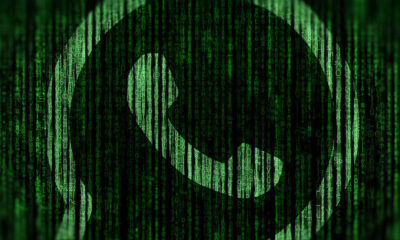News
In A Shock Move, Twitter Adds An Edit Button To Tweets
The social media giant has finally backtracked after years of pressure and will first roll out the new Edit Tweet feature to premium subscribers.

It’s taken years of complaints and thousands of desperate pleas from a vocal portion of Twitter’s 237 million active users, but now, the social media giant has finally caved under pressure. After nearly 16 years of sticking to a tried and tested format, Twitter will finally allow users to edit Tweets after posting them.
If it were any other platform, adding such a tiny, seemingly inconsequential feature would largely go unnoticed. Yet, because we’re talking about Twitter here, the move represents one of the most significant changes to the social media landscape since the company doubled the character limit of posts from 140 to 280 way back in 2017.
Many would argue that the lengthier Tweets and new addition of an edit button will change the platform into something it was never meant to be. Certainly, the entire atmosphere of the site will (and already has) changed since its niche beginnings — though it’s always been a place for spicy takes and online brawls.
So why the sudden change of direction? Here’s what the company had to say about the controversial matter:
“We’re hoping that with the availability of Edit Tweet, tweeting will feel more approachable and less stressful. You should be able to participate in the conversation in a way that makes sense to you,” says Twitter in an official statement.
Also Read: Truecaller For iPhone Sees Complete Overhaul
We should mention at this point that not everyone will be granted access to this mythical new feature. Employees will first test the edit button; then, it will be added to the accounts of Twitter Blue subscribers. Eventually, Twitter plans to roll out the Edit Tweet feature to its entire user base, though we don’t have any formal word on a date for that.
Users will be allowed to edit Tweets within a 30-minute window of posting, and any changes will trigger a label to be displayed, notifying readers that a change has been made. If the label is clicked, you’ll be able to see a list of edits, so the new feature won’t entirely save you from embarrassing spelling mistakes or attempts to tone down poorly judged online rants.
News
Alienware Just Announced Six New Gaming Monitors
The new models include three QD-OLED and three budget-friendly QHD options, expanding the company’s lineup for all gamers.

Alienware has just updated its gaming monitor lineup with six new additions, including the highly anticipated Alienware 27 4K QD-OLED Monitor. The latest wave of releases is set to reach more gamers than ever, offering high-end QD-OLED displays alongside more budget-friendly options.
The latest displays clearly show that the company is doubling down on QD-OLED with three new models sporting the technology. A redesigned Alienware 34 Ultra-Wide QD-OLED Monitor is also making a return, further refining what is already a fan-favorite display.
A Unified Design: The AW30 Aesthetic
All six monitors feature Alienware’s new AW30 design language, first introduced at CES. The AW30 aesthetic brings a futuristic, minimalist look that unites the entire lineup under a cohesive visual identity.
Pushing QD-OLED Even Further
The refreshed Alienware 34 Ultra-Wide QD-OLED Monitor (AW3425DW) builds on its predecessor’s success with a 240Hz refresh rate (up from 175Hz) and HDMI 2.1 FRL support. It also gains G-SYNC Compatible certification alongside AMD FreeSync Premium Pro and VESA AdaptiveSync, ensuring ultra-smooth performance. With a WQHD (3440×1440) resolution and an 1800R curve, this display enhances immersion for both gaming and cinematic experiences.
For those who crave speed, the Alienware 27 280Hz QD-OLED Monitor (AW2725D) pairs a high refresh rate with QHD resolution, balancing sharp visuals with ultra-smooth gameplay. Meanwhile, the Alienware 27 4K QD-OLED Monitor (AW2725Q) delivers stunning clarity with an industry-leading pixel density of 166 PPI, making it the sharpest OLED or QD-OLED monitor available.
Also Read: Infinite Reality Acquires Napster In $207 Million Deal
Worried about OLED burn-in? Alienware’s entire QD-OLED lineup comes with a three-year limited warranty covering burn-in concerns, offering peace of mind for gamers investing in these high-end displays.
Bringing QHD To A Wider Audience
Alongside QD-OLED, Alienware is also releasing three new QHD gaming monitors aimed at more price-conscious gamers. The Alienware 34 Gaming Monitor (AW3425DWM), Alienware 32 Gaming Monitor (AW3225DM), and Alienware 27 Gaming Monitor (AW2725DM) provide a range of sizes and formats to suit different preferences:
- The Alienware 34 Gaming Monitor (AW3425DWM): An ultrawide (WQHD) option for a panoramic, immersive experience.
- The Alienware 32 Gaming Monitor (AW3225DM): A standard 16:9 panel for a traditional but expansive desktop setup.
- The Alienware 27 Gaming Monitor (AW2725DM): A 27” display offering the same performance in a more compact form factor.
All three gaming monitors feature a fast 180 Hz refresh rate, a 1ms gray-to-gray response time, and support for NVIDIA G-SYNC, AMD FreeSync, and VESA AdaptiveSync to eliminate screen tearing. Additionally, with 95% DCI-P3 color coverage and VESA DisplayHDR400 certification, these displays deliver vibrant colors and high dynamic range for lifelike visuals.



























